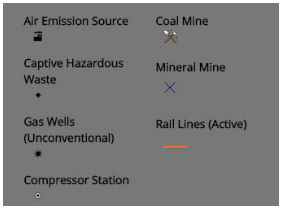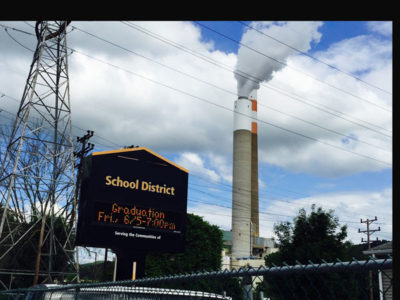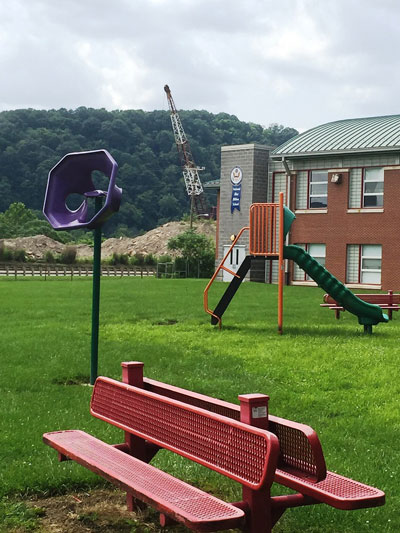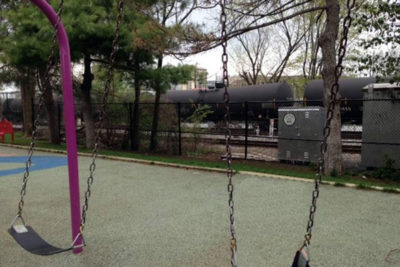How To Use This Map
This mapping initiative used publicly available data to identify potential environmental hazards located within a one-mile radius of a public school building in the southwestern Pennsylvania region. This ten-county region includes: over 336,000 children attending public schools, 674 public school buildings, 128 school districts, and 7,040 square miles.
This initiative mapped the following potential environmental hazards: air emission sources, gas wells (unconventional also known as Marcellus wells, as well as compressor stations), mining operations, and active rail lines. This first phase reviewed public schools, charter schools and technical schools. Data was collected from the PA Department of Environmental Protection (gas wells, mining hazards); the PAMAP program (rail lines); and the Environmental Protection Agency (air emission sources).
To pan across the map, right click and hold the button on your mouse while moving the cursor across the screen.
Each school building is identified as a point (circle on the map). The darker the circle, the more environmental hazards located within that one-mile radius of the school. For example, a red dot has a higher number of potential hazards, a yellow dot has fewer. Each school has a large circle drawn around it, which depicts the one-mile area. If you only see a symbol (depicting an environmental hazard) and not a circle (identifying the school and one-mile radius), you will have to zoom out (- button) to locate the school.
The school districts are also outlined on this map. When you click on the district, its boundary will be highlighted in turquoise blue. The more overlaps of environmental hazards within that school district, the darker the shade of purple. The location of environmental hazards can impact more than one school in a district.
In the upper left corner of the map are + and – buttons. Use this feature to zoom in and out of a particular area on the map to find your school or district. You may also search for your school by clicking here. The symbols depicting environmental hazards on the map are depicted as follows:





